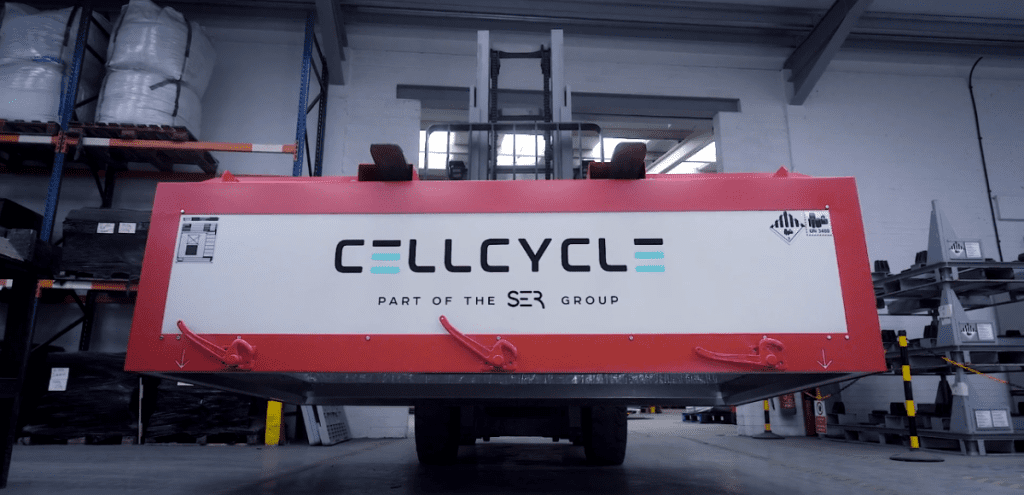Maintaining optimal SoC is essential to lithium battery integrity, safety, and lifecycle performance — here’s how Cellstorage implements best-in-class storage protocols.
In the industrial lithium-ion battery supply chain, effective storage is not just about space — it’s about preservation, safety, and readiness. One critical factor influencing all three is the State of Charge (SoC).
At Cellstorage, SoC management is embedded into our operational framework. It forms the foundation of how we deliver secure, regulation-compliant storage for lithium battery assets across sectors like energy, automotive, and manufacturing.
Understanding SoC in Industrial Battery Storage
State of Charge (SoC) refers to the current energy level of a battery, expressed as a percentage of its total capacity. Unlike traditional fuel reserves, lithium batteries cannot be stored at full or empty charge without incurring risk.
Whether overcharged or deeply discharged, poor SoC levels during storage contribute to:
- Accelerated capacity degradation
- Thermal instability or cell swelling
- Shortened service life and higher replacement rates
- Increased risk of non-compliance with safety standards
According to Battery University, long-term storage at high SoC increases stress on the positive electrode and leads to faster capacity fade, while deep discharge can trigger voltage drop below safe thresholds that permanently damage the cell.
Maintaining proper SoC is therefore a foundational aspect of the best practices for lithium battery storage.
Lithium Battery Storage Guidelines: The Optimal SoC Range
Across most lithium-ion chemistries, the optimal SoC range for storage lies between:
- 30% to 70% SoC
This range is cited in several manufacturer guidelines, including those from Samsung SDI and LG Chem, as the best condition to minimise internal resistance growth and chemical instability during prolonged storage.
In addition, IEC 62660-2 (the international standard for lithium-ion batteries for automotive use) also notes that storing batteries at partial state of charge improves long-term durability and reduces risk of overheating.
Common SoC Mismanagement Issues in Industry
Despite clear guidance, these common errors still threaten stored battery assets:
- Storing at 100% SoC
High SoC levels increase electrolyte breakdown and pressure build-up, which can lead to cell expansion or rupture, especially in elevated temperatures. - Storing Near 0% SoC
Low SoC increases the chance of deep discharge, and if a cell drops below its cut-off voltage, the protective circuit may not allow recharging. - Lack of Periodic Monitoring
Research from the U.S. Department of Energy shows that self-discharge, even in ideal conditions, can vary significantly depending on cell chemistry and age, meaning batteries left unchecked can easily drift into damaging zones.
How Cellstorage Implements SoC Best Practices
At Cellstorage, our SoC control procedures are based on proven lithium battery storage guidelines from global standards and real-world testing. Here’s how we manage it:
- ✅ Pre-storage Conditioning
SoC is tested and adjusted to optimal levels using calibrated systems prior to warehousing. - ✅ Climate-Controlled Storage
Environmental factors like temperature and humidity, which directly influence SoC drift, are strictly regulated. - ✅ Ongoing SoC Monitoring
Periodic charge-level checks ensure batteries remain within their safety envelope throughout storage. - ✅ Asset Transparency
Digital dashboards provide our clients with SoC visibility and reporting to meet regulatory and operational expectations.
Final Thought: SoC Isn’t Just a Metric — It’s a Storage Standard
Storing lithium-ion batteries without managing SoC invites degradation, safety hazards, and regulatory risk. Whether you’re holding new inventory, returns, or end-of-life batteries, SoC control should be a core feature of any storage strategy.
At Cellstorage, we align with industry-recognised best practices for lithium battery storage — combining technical accuracy, environmental controls, and compliance with international standards.
Looking for a storage partner that understands the science, not just the logistics?
Contact Cellstorage today to learn how our SoC protocols can help protect and optimise your lithium battery assets.


